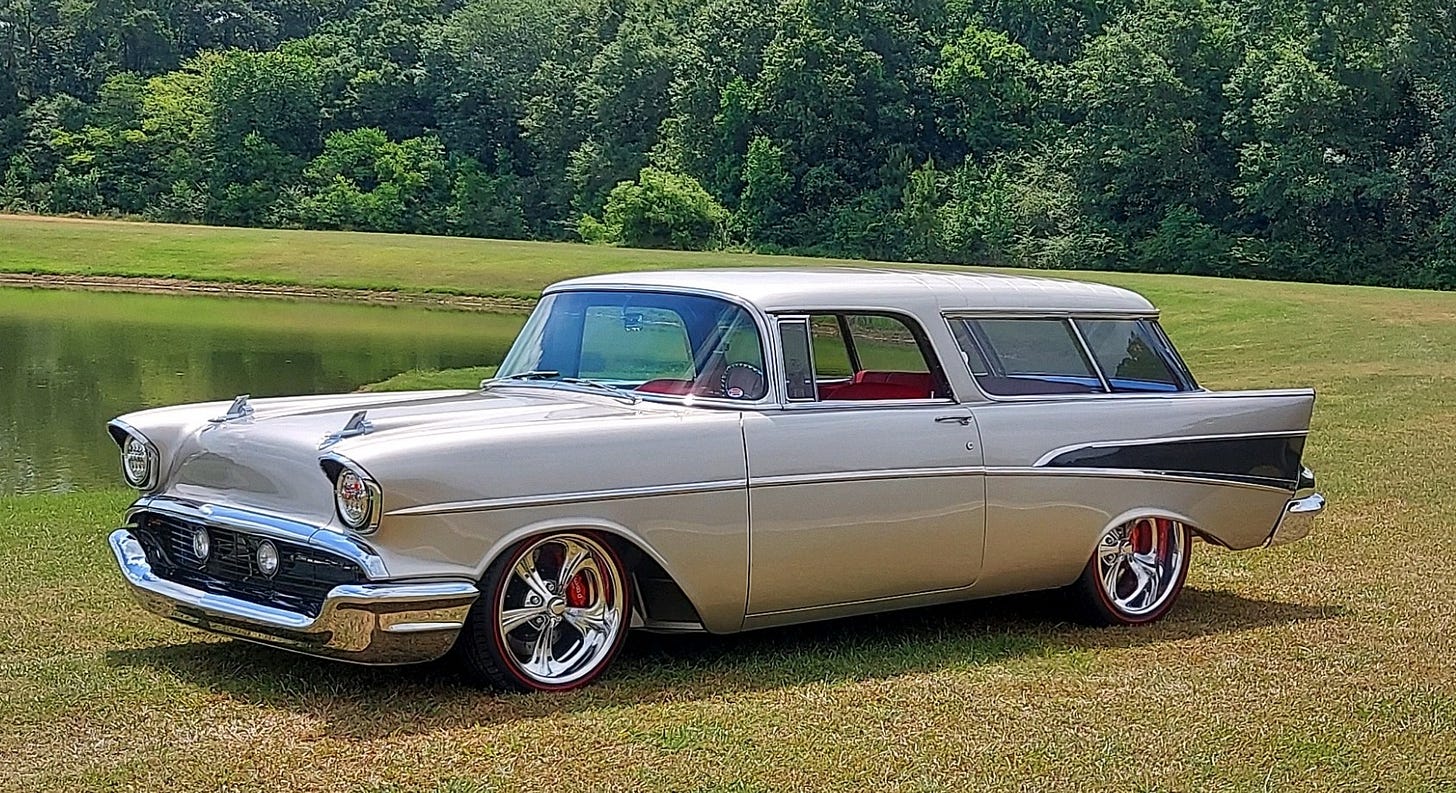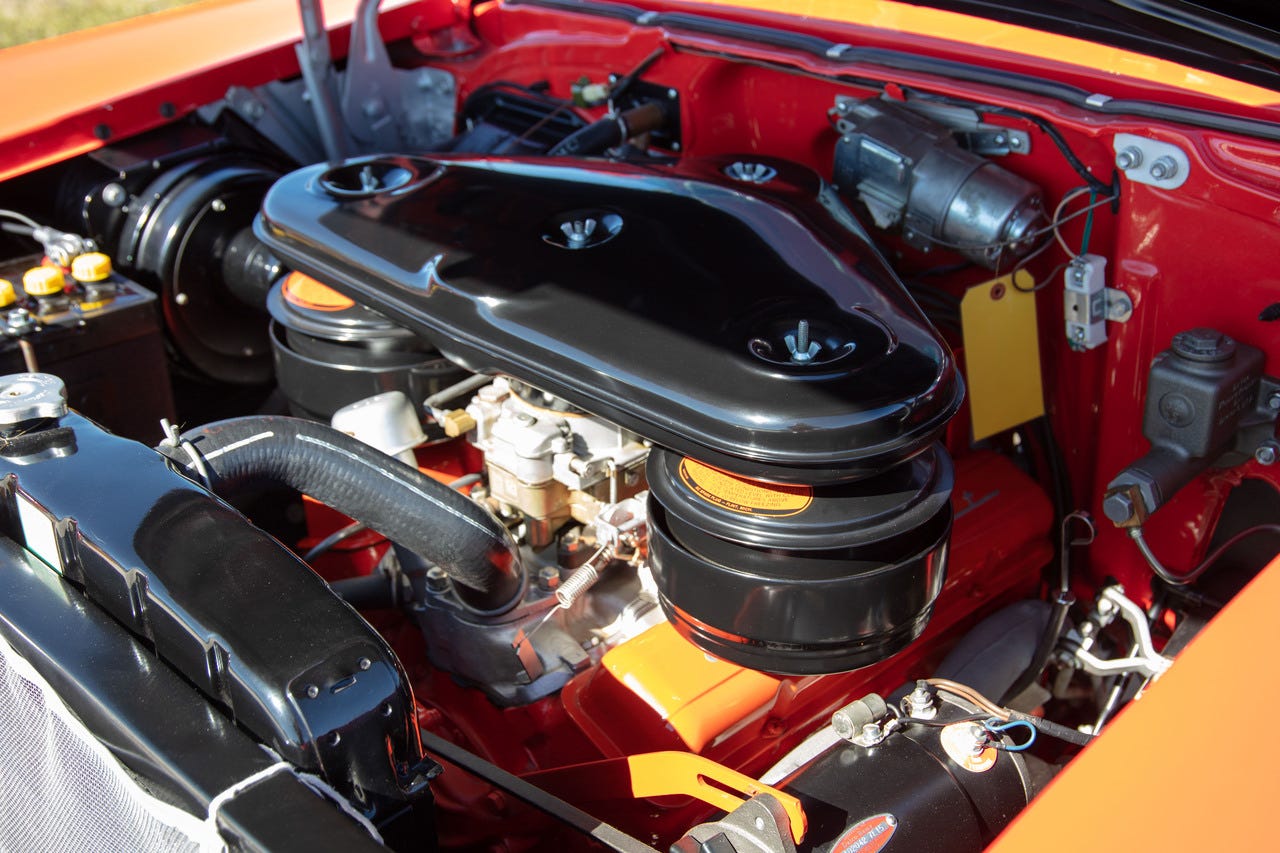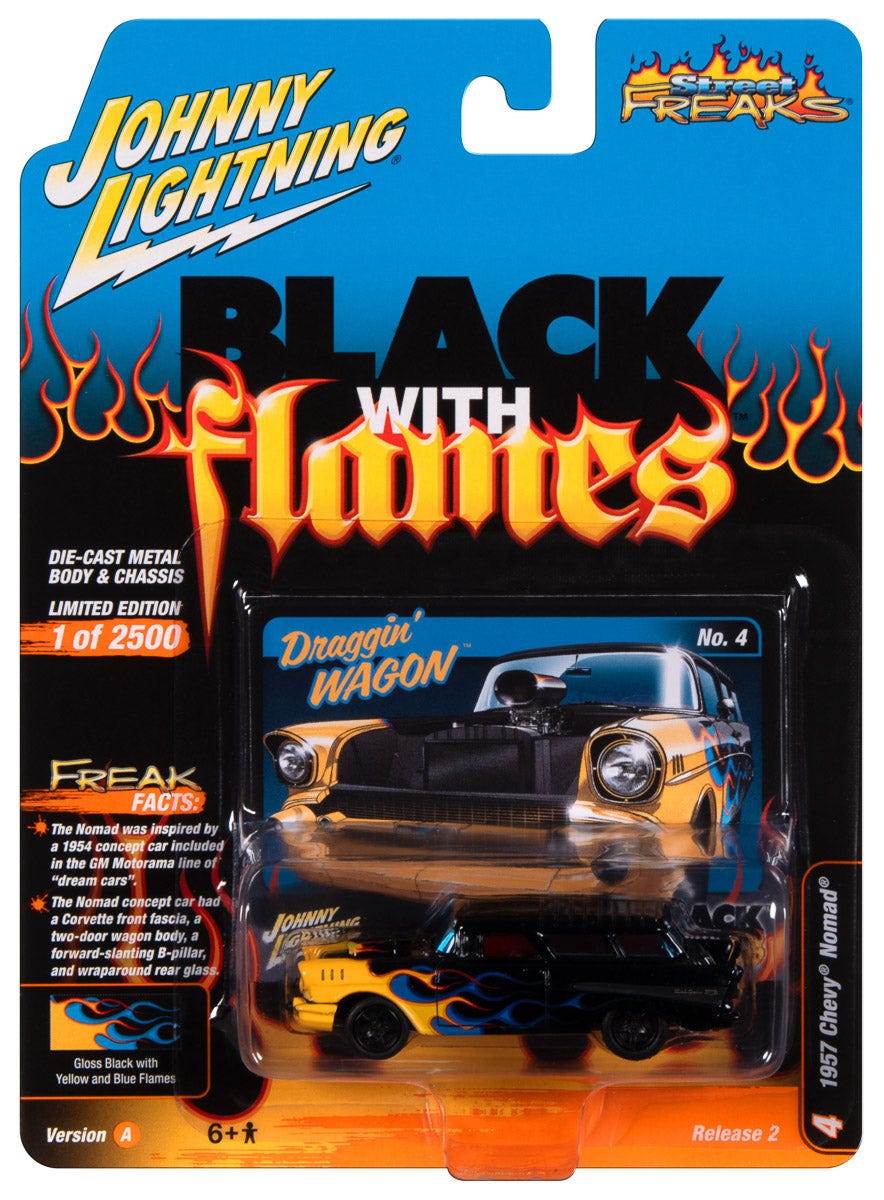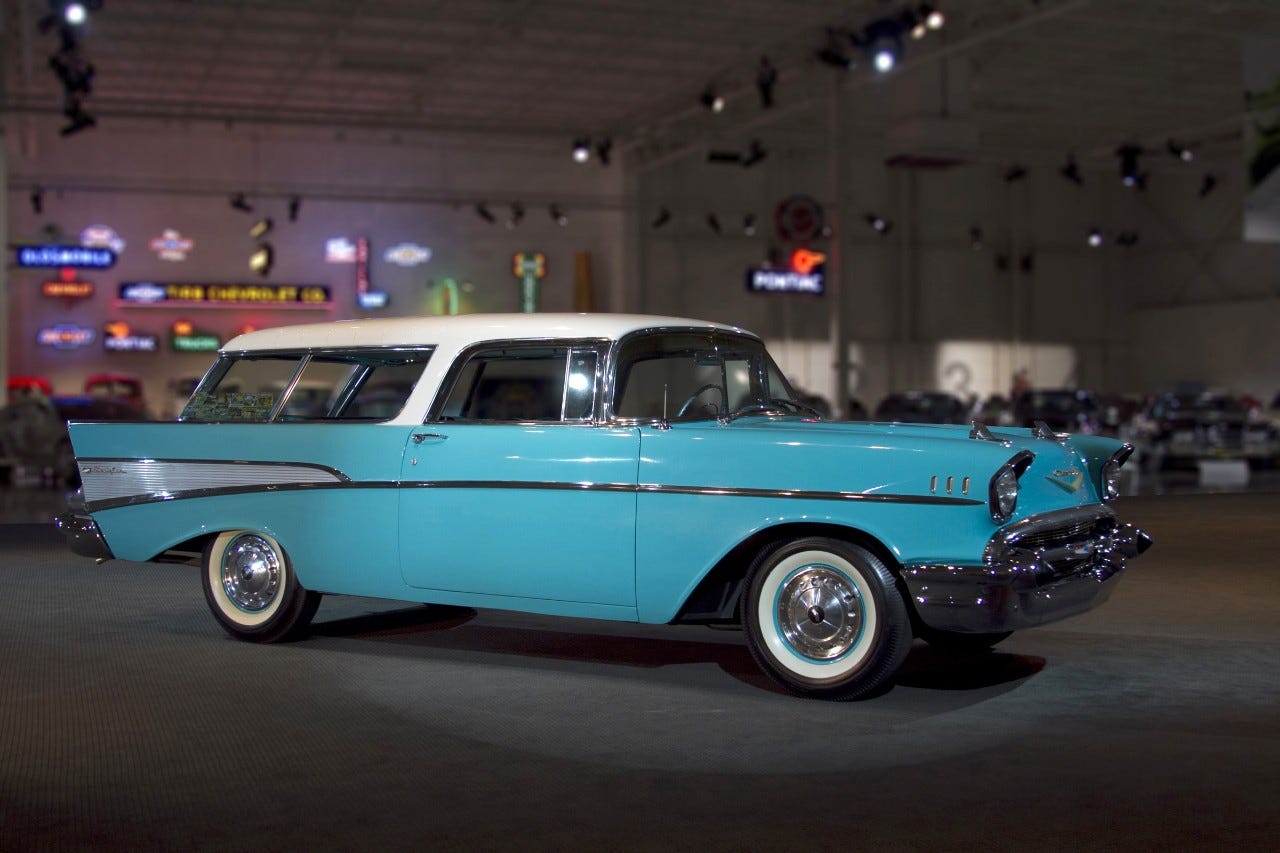The 1957 Chevrolet Nomad: A Classic American Icon
The Chevrolet Nomad concept was first introduced at the 1954 General Motors Motorama, an auto show where car manufacturers showcased futuristic designs and cutting-edge concepts.
The 1957 Chevrolet Nomad remains one of the most celebrated American cars of the 20th century. Known for its stylish design, versatile body, and powerful engine, the Nomad epitomizes the innovative spirit of Chevrolet during the 1950s.
This article explores the history, body style, engine specifications, unique features, cultural impact, and more, highlighting why the 1957 Chevrolet Nomad continues to be a revered classic today.
The Birth of the Chevrolet Nomad: A Brief History
The Chevrolet Nomad concept was first introduced at the 1954 General Motors Motorama, an auto show where car manufacturers showcased futuristic designs and cutting-edge concepts. The Nomad was initially conceived as a two-door station wagon that blended the utility of a family vehicle with the sporty aesthetic of a coupe. Its distinct styling, including the swept-back roofline and rear tailgate, was a departure from the more traditional wagon designs of the era.
The production model of the Nomad first appeared in 1955 as part of Chevrolet’s iconic Tri-Five series, which included the 1955, 1956, and 1957 Chevrolet models. This series was known for its revolutionary V8 engines, new styling, and improved performance. Among these, the 1957 Nomad is often regarded as the pinnacle, featuring advanced design elements and engineering innovations that set it apart.
Design and Body Style: A Blend of Utility and Elegance
The 1957 Chevrolet Nomad boasted a distinctive body style that combined the practicality of a station wagon with the sleek lines of a sports car. This unique design choice was the result of Chevrolet’s desire to create a vehicle that could serve both as a functional family car and a stylish, high-performance vehicle. The Nomad's two-door design was rare for station wagons, as most wagons of the time had four doors to maximize accessibility.
The front of the Nomad featured the iconic Chevrolet grille, adorned with a gold "Chevrolet" script emblem. The dual headlamps were framed by large, rounded chrome bezels, contributing to its aggressive and polished look. The 1957 model was distinguished by its unique "Dagmar" bumper bullets, which added a bold touch to the car’s front end.
The rear of the vehicle was equally striking, characterized by its flat tailgate with chrome trim and jet-inspired tailfins. These tailfins, along with the sleek body lines and wide rear windows, gave the Nomad a futuristic appearance. The wraparound rear glass was another hallmark feature, offering enhanced visibility and contributing to its aerodynamic look.
The use of two-tone paint schemes was prevalent in 1957, allowing owners to customize their Nomads with vibrant, contrasting colors. Popular combinations included Larkspur Blue with India Ivory, and Matador Red with Onyx Black, which highlighted the car’s bold, sweeping lines.
Engine Specifications: Power and Performance
Under the hood, the 1957 Chevrolet Nomad came with several engine options that catered to different performance needs. The standard engine was the 235-cubic-inch "Blue Flame" inline-six, producing 140 horsepower. However, most buyers opted for the more powerful V8 engines, which became synonymous with the Tri-Five Chevrolets.
The small-block V8 engines were available in different configurations:
265-cubic-inch V8: This engine produced 162 horsepower with a two-barrel carburetor and was one of the early entries in the small-block series.
283-cubic-inch V8: The highlight of the 1957 lineup, this engine was available in several configurations, ranging from 185 horsepower with a two-barrel carburetor to 283 horsepower with fuel injection.
The fuel-injected 283 V8, known as the "Fuelie," was groundbreaking. It was the first American production engine to achieve one horsepower per cubic inch, a significant engineering milestone that showcased Chevrolet's commitment to performance. This engine made the Nomad a powerhouse on the road, offering a level of acceleration and speed that rivaled many sports cars of the time.
Transmission options included a three-speed manual, a Powerglide two-speed automatic, and a new Turboglide automatic, which offered smoother and more efficient gear changes.
Unique Features and Innovations
The 1957 Chevrolet Nomad was not just a pretty face; it was packed with innovative features that set it apart from other vehicles of the era. Some notable elements included:
Rollover Rear Seat: One of the unique aspects of the Nomad was its rear seat design. The back of the seat could be rolled forward, allowing for a flat load floor in the cargo area. This made the Nomad highly versatile, catering to both passengers and cargo.
Clamshell Tailgate: The split tailgate design featured a retractable rear window and a fold-down lower gate. This made it easier to load and unload items, further enhancing the car’s practicality.
Air Suspension (Optional): Chevrolet experimented with an air suspension system, providing a smoother ride and better handling. However, this option was relatively rare and not widely adopted due to reliability issues.
Electric Wipers: Replacing the older vacuum-powered wipers, the electric wipers were more reliable and effective, especially during heavy rain.
Impact on Popular Culture
The 1957 Chevrolet Nomad quickly became a cultural icon, representing the spirit of the 1950s—a time when cars were symbols of freedom and individuality. It has appeared in numerous films, TV shows, and music videos, often as a symbol of nostalgia for the golden age of American automobiles.
In movies like American Graffiti and Two-Lane Blacktop, the Nomad was featured as part of the classic car culture that defined the post-war American dream. It was also a favorite among hot rodders and car enthusiasts, who saw the potential for customization and high-performance upgrades. The car's sleek lines and sporty appearance made it a popular choice for restorations and modifications, which continue to this day.
Celebrity Owners and the Nomad's Enduring Appeal
Over the years, the Chevrolet Nomad has attracted a number of celebrity owners. Musicians, actors, and car enthusiasts alike have been drawn to its unique blend of style and performance. Some notable owners include:
Elvis Presley: Known for his love of classic cars, Elvis had a vast collection of Chevrolets, including a 1957 Nomad.
Bruce Springsteen: The rock legend is rumored to have owned a customized Nomad during the 1980s, reflecting his appreciation for American automotive classics.
Jay Leno: A renowned car collector, Leno has featured the Nomad on his show Jay Leno's Garage, showcasing its timeless design and performance capabilities.
The enduring appeal of the Nomad is evident in its presence at car shows and auctions, where it often commands high prices. Enthusiasts and collectors prize the 1957 model for its rarity, as only about 6,103 units were produced that year.
Advertising the Nomad: A New Era of Marketing
Chevrolet's advertising campaign for the 1957 Nomad emphasized its unique blend of style and functionality. Slogans like "Dream Car Design" and "Chevrolet—The Hot One!" played up its sporty image, while promotional materials highlighted its versatility as a family vehicle.
Print ads often featured the Nomad in picturesque settings, such as suburban driveways or on road trips, appealing to the growing American middle class. Chevrolet aimed to position the Nomad as a car that could do it all—whether it was ferrying the family, hauling luggage, or making a statement at the drive-in.
Legacy and Collectability
Today, the 1957 Chevrolet Nomad is considered one of the most collectible cars of the 1950s. Its distinctive design, limited production run, and cultural significance have made it a favorite among classic car enthusiasts. Restored models in good condition can fetch six-figure sums at auctions, reflecting its status as a highly desirable classic.
The Nomad’s legacy extends beyond its own production run. It has inspired modern interpretations, such as the Chevrolet HHR, which pays homage to the classic Nomad's styling cues. The concept of a sporty, two-door wagon has been revisited by other manufacturers as well, underscoring the impact of the Nomad on automotive design.
Conclusion: An Icon That Endures
The 1957 Chevrolet Nomad is more than just a car; it is a symbol of a bygone era of American innovation and style. Its blend of performance, versatility, and aesthetics made it a standout in its time, and its legacy continues to captivate car enthusiasts today. The Nomad’s influence can still be felt in the automotive world, where it remains a touchstone of design excellence and a reminder of the golden age of American automobiles.
From its introduction at the Motorama to its presence in the garages of collectors and celebrities, the Nomad’s journey is a testament to its timeless appeal. Whether seen cruising down a highway or displayed at a car show, the 1957 Chevrolet Nomad continues to turn heads and spark the imagination, solidifying its place in the annals of automotive history.
CLICK HERE FOR SPECIAL DISCOUNT LINK
Set in the proverbial boomtowns of West Texas, LANDMAN is a modern-day tale of fortune seeking in the world of oil rigs. The new original drama series will star Oscar winner Billy Bob Thornton.
In addition to Thornton, the series stars Ali Larter (The Last Victim), Michelle Randolph (1923), Jacob Lofland (Joker 2), Kayla Wallace (When Calls the Heart), James Jordan (Yellowstone), Mark Collie (Nashville), Paulina Chávez (The Expanding Universe of Ashley Garcia), and Demi Moore (Feud: Capote Vs. The Swans).
Jon Hamm (Mad Men) will star in a recurring guest role with Andy Garcia (Expendables franchise) and Michael Peña (End of Watch) also serving as guest stars.
Half the price, all the fun. Get 50% OFF any Paramount+ annual plan for a limited time! Take advantage of the special offer and start streaming...
Take advantage of this limited time offer and also remember to stream the NFL on CBS live on Paramount+. Redeem now!
Everyday your story is being told by someone. Who is telling your story? Who are you telling your story to?
Email your sustainable story ideas, professional press releases or petro-powered podcast submissions to thecontentcreationstudios(AT)gmail(DOT)com.
#thecrudelife promotes a culture of inclusion and respect through interviews, content creation, live events and partnerships that educate, enrich, and empower people to create a positive social environment for all, regardless of age, race, religion, sexual orientation, or physical or intellectual ability.
MORE FROM THE CRUDE LIFE
Please click that ♡ button, share, and subscribe.
Please share the links on social media.
Thank you thank you thank you for your engagement and support.
If you have a news tip, press release, guest suggestion or other content concepts, please email thecontentcreationstudios(AT)gmail(DOT)com
This post was brought to you in part by one of The Crude Life’s fantastic sponsors, please consider supporting their services or learning more about their organization by clicking on the banner below.
BCK-9 Services
Whether you want basic obedience for a family pet or need professional handlers for narcotic and explosive detection, BCK-9 delivers reliable results. With over 20 years of experience in the working dog community, our founder, military veteran Dwayne Farris, brings unparalleled expertise in dog training and leak detection techniques.
The BCK-9 team brings a personalized approach to ensure we tailor our services to meet your needs, providing customized solutions that go further than the competition.
With our commitment to the well-being of our clients' dogs and precision and efficiency in our results, the dedicated team of professionals at BCK-9 Services delivers excellence in every service.
Originally from the Thief River Falls Crookston area, Farris understands the need for Otter Talk.
Follow BCK-9 Services on their website, Facebook, LinkedIn, Instagram, X (Twitter) or TikTok.












